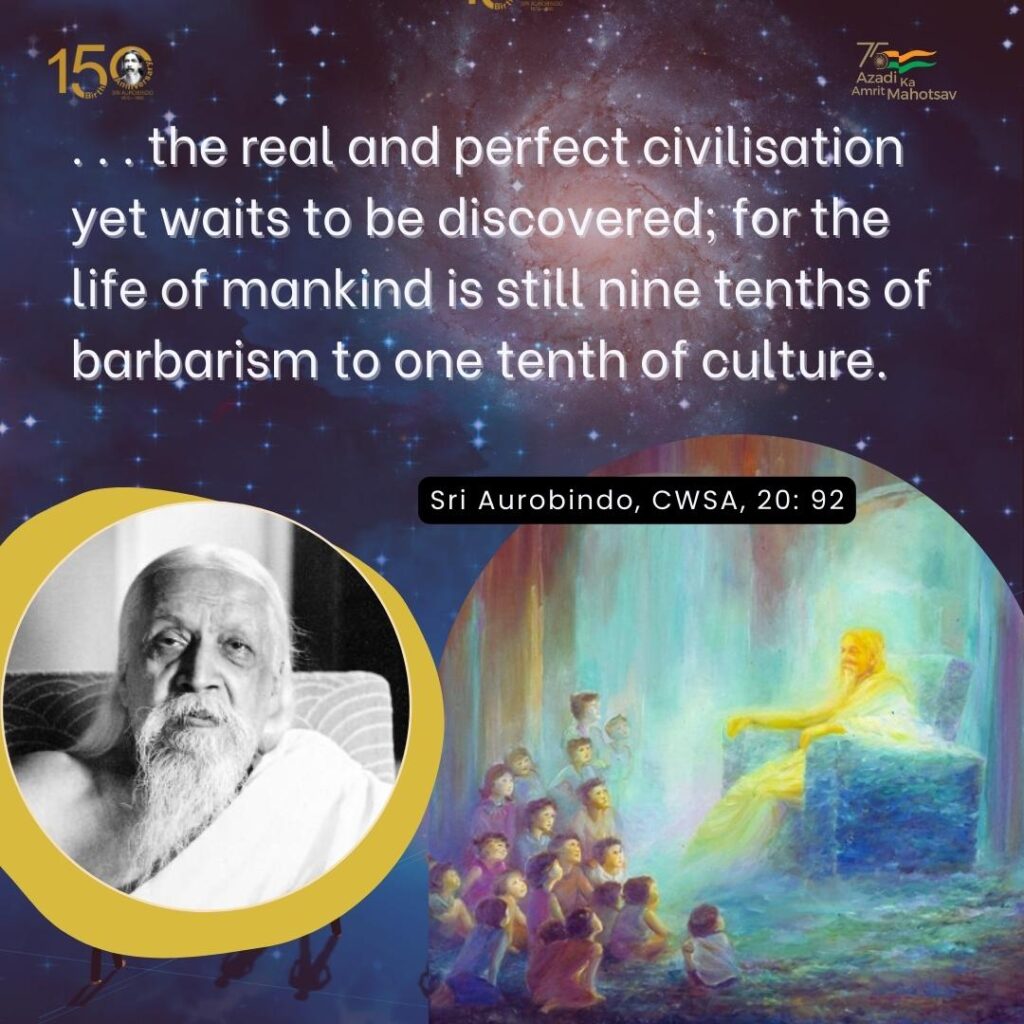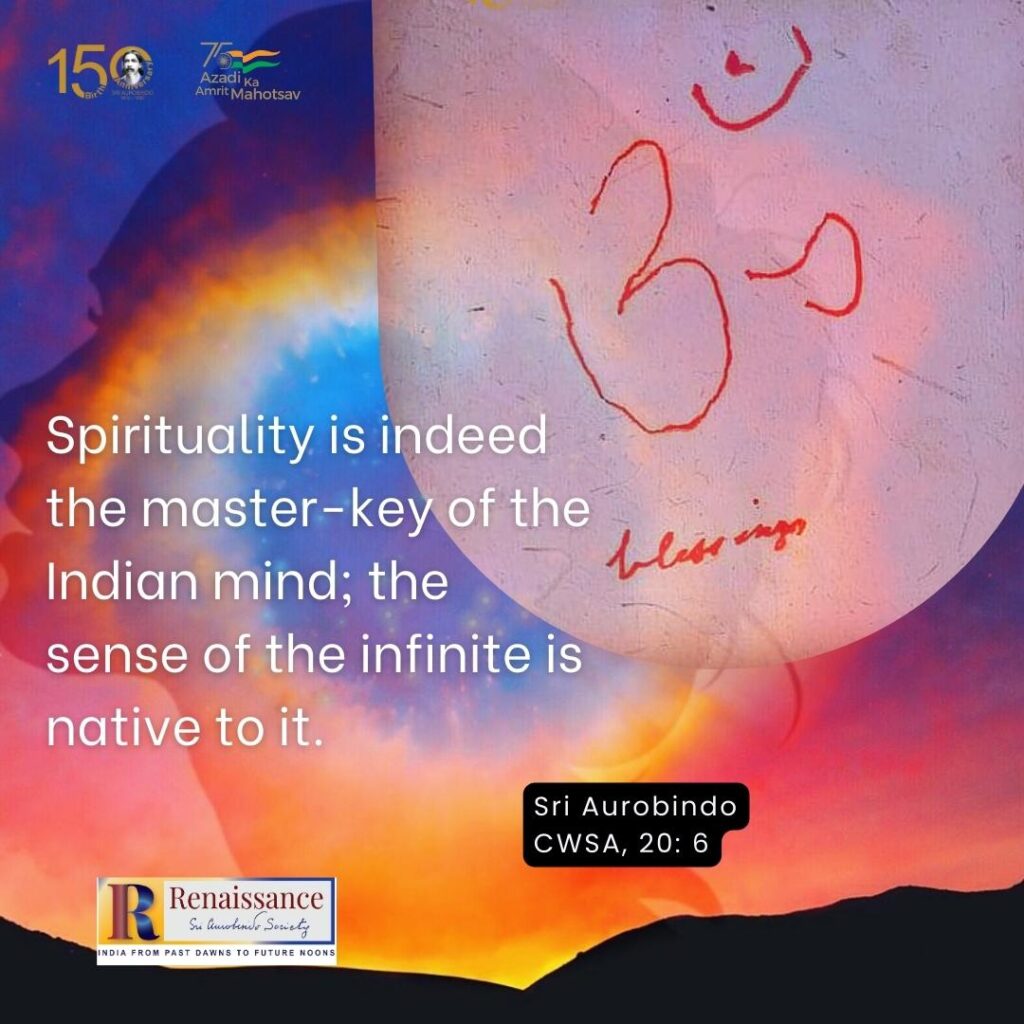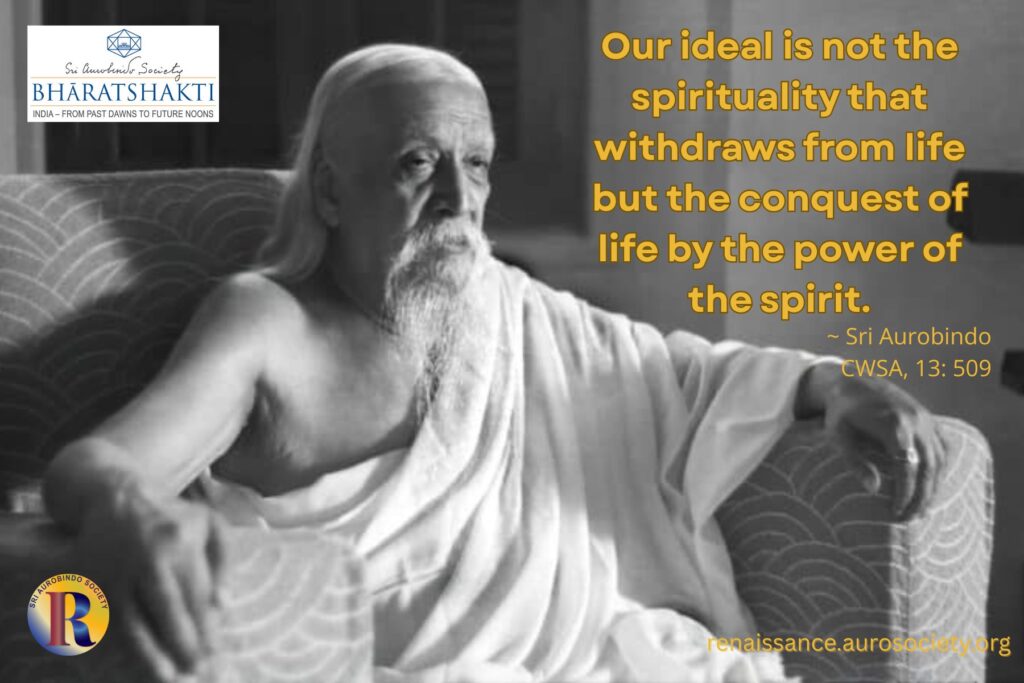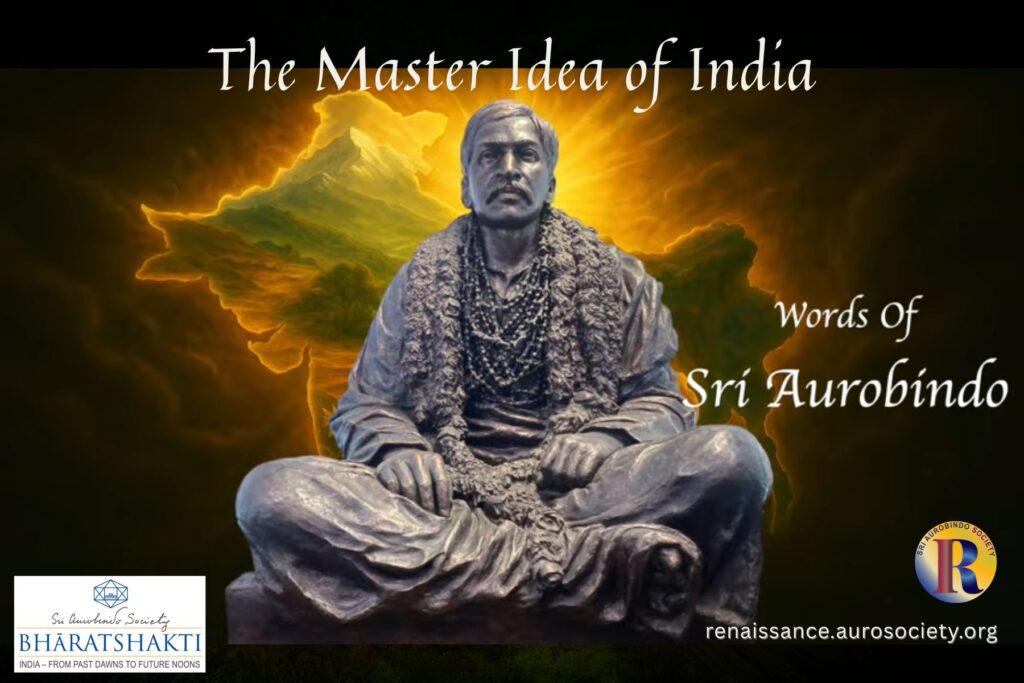CONTINUED FROM PART 2
The Cosmic Vision of Sri Aurobindo
Sri Aurobindo’s synthetic vision is cosmic and has the merits of comprehensiveness and clarity. It points the way to a new creation (may I say, a world culture?) on sound foundations of our culture. Is he a mere revivalist, or only a proud nationalist who glories in the past? Is he merely an enthusiastic exponent of our culture, a mere intellectual?
He himself expresses his attitude to all human cultures:
There is here no real question between barbarism and civilisation, for all masses of men are barbarians labouring to civilise themselves. There is only one of the dynamic differences necessary for the completeness of the growing orb of human culture.
~ CWSA, Vol. 20, p. 139
He does not assert that Indian culture is the highest and others are not needed or useful.
But writes that there is a need of divergent lines of advance “until we can raise our heads into that infinity of the spirit in which there is a light broad enough to draw together and reconcile all highest ways of thinking, feeling and living.” (CWSA, Vol. 20, p. 139)
The Real and Perfect Civilisation Waits
Sri Aurobindo admits the imperfections of our culture and says that completeness or finality can not be “alleged of no past or present cultural idea or system.” (CWSA, Vol. 20, p. 167)
Still he says:
Each [civilisation] has achieved something of special value for humanity in the midst of its general work of culture, brought out in a high degree some potentiality of our nature and given a first large standing-ground for its future perfection.
~ CWSA, Vol. 20, p. 224
Further he observes, that mankind is still “no more than semi-civilised and it was never anything else in the recorded history of its present cycle.” (CWSA, Vol. 20, p. 234)
As for reviving the past or living on its capital he says that “to live on our capital without using it for fresh gains is to end in bankruptcy and pauperism.” (CWSA, Vol. 20, p. 75). Further he adds:
. . . to shrink from enlargement and change is too a false confession of impotence. It is to hold that India’s creative capacity in religion and in philosophy came to an end with Shankara, Ramanuja, Madhwa and Chaitanya and in social construction with Raghunandan and Vidyaranya.
It is to rest in art and poetry either in a blank and uncreative void or in a vain and lifeless repetition of beautiful but spent forms and motives. It is to cling to social forms that are crumbling and will continue to crumble in spite of our efforts and risk to be crushed in their collapse.
~ CWSA, Vol. 20, pp. 75-76
Evaluating the two cultures — Indian and European — and their achievements, Sri Aurobindo says that from the view of the evolutionary future, both the European and Indian civilisations at their best have only been “half achievements, infant dawns pointing to the mature sunlight that is to come.” (CWSA, Vol. 20, p. 85).
Forecasting a severe judgment of the future against the present he says that the coming ages may look on Europe and Asia of today much as we look on savage tribes or primitive peoples. Further, he adds:
Not only are there everywhere positive, ugly, even “hideous” blots on the life of man, but much that we now accept with equanimity, much in which we take pride, may well be regarded by a future humanity as barbarism or at least as semi-barbarous and immature.
~ CWSA, Vol. 20, p. 86
Looking at the future, Sri Aurobindo tells us that the real and perfect civilisation yet waits to be discovered; “for the life of mankind is still nine tenths of barbarism to one tenth of culture.” (CWSA, Vol. 20, p. 92)

Clear Exposition of the Integral Foundations of Indian Culture
[. . .]
Holding that all human cultures are imperfect, why, it may be asked, does he take so much trouble to lay bare the foundations of Indian culture?
It is because Indian culture stands for a great truth, an indispensable truth of human life and its perfection. In spite of India having achieved freedom there is still need for the defence and preservation of its fundamental values, for there is danger of their being neglected or destroyed. Other externally more powerful cultures have arisen and have challenged the basis of Indian culture.
I believe there was a second reason also. Even great leaders are puzzled by the baffling complexity of Indian culture and are at a loss to find its true foundations. There was a need for a clear exposition of the integral foundations which would, in effect, be the international form of Indian culture.
Sri Aurobindo declares:
The living aim of culture is the realisation on earth of the kingdom of heaven.
~ CWSA, Vol. 20, p. 60
In Sri Aurobindo’s vision the element of Tapas — concentrated force of consciousness is not lacking. The programme he has put before the individual and the collective man is dynamic and its carrying out would require not only human but also divine Tapas.
He advocates the pressing need of realising international unity and peace, which cannot be realised without active will. Harmony and beauty are, according to him, the highest attributes of the Divine.
In addition to all these elements that are commonly stressed by the great leaders there is one element, the most fundamental, I believe, to our culture in which Sri Aurobindo stands apart. It is in his insistence on founding life with the Divine as the centre. That is the element he has in common with Ramakrishna and I believe that it is the central stone in the arch of our ancient culture.
Sri Aurobindo has put the ideal before the whole of humanity because he sees it as the rational, nay inevitable culmination of the process of cosmic evolution. And he points out that it is man’s special privilege to be called upon to participate consciously in his own self-exceeding.
About the foundation of Indian culture Sri Aurobindo emphasises:
Spirituality is indeed the master-key of the Indian mind; the sense of the infinite is native to it.
~ CWSA, Vol. 20, p. 6

CONTINUED IN PART 4
~ Design: Beloo Mehra



